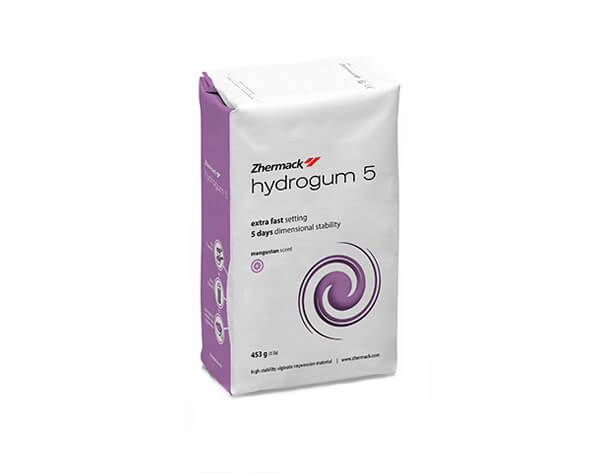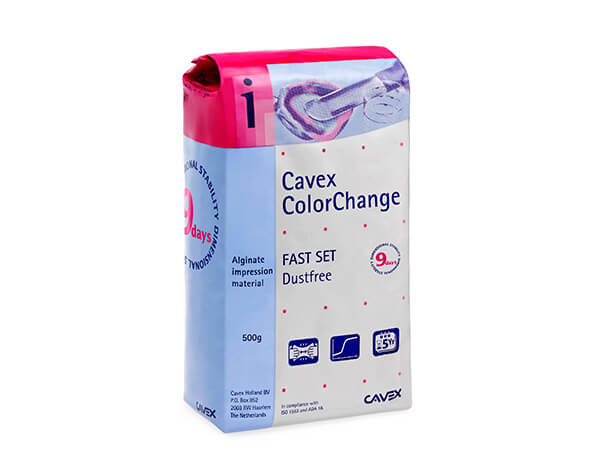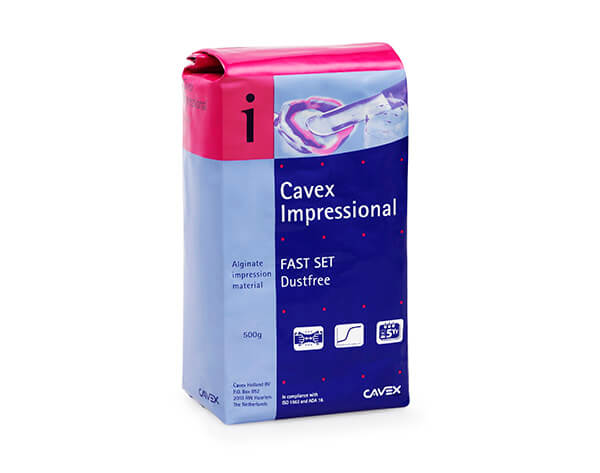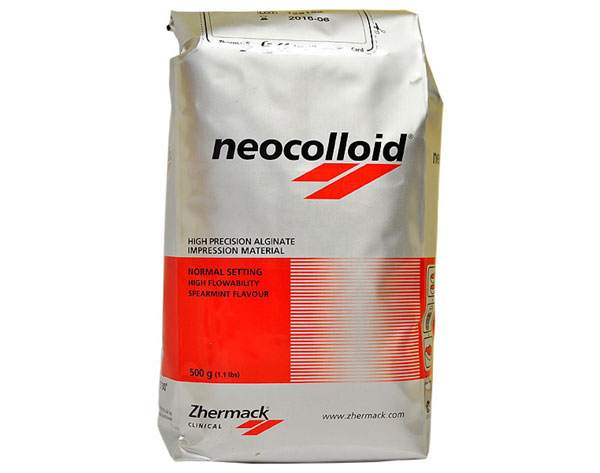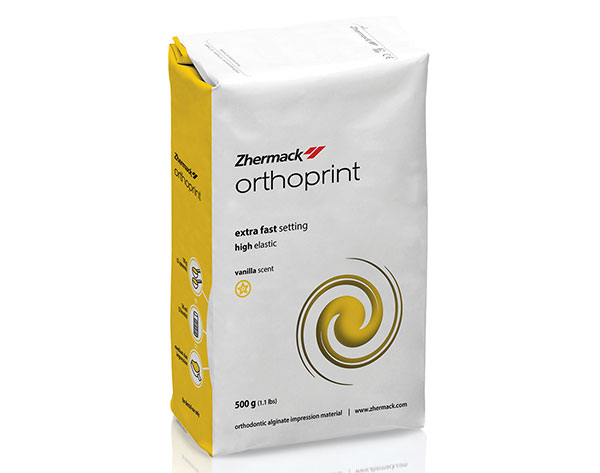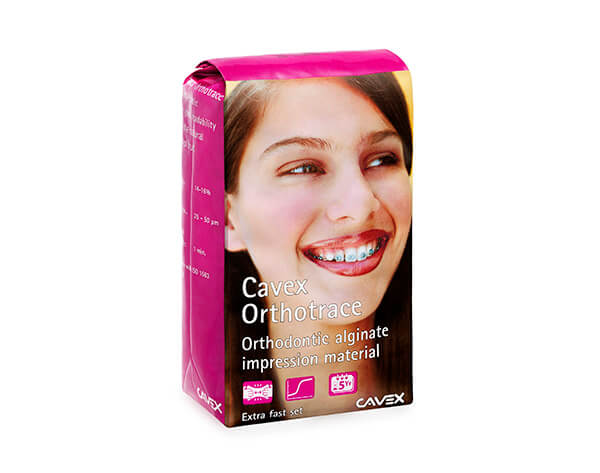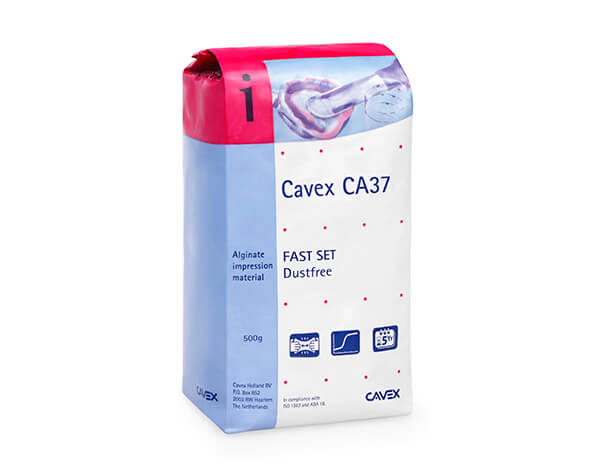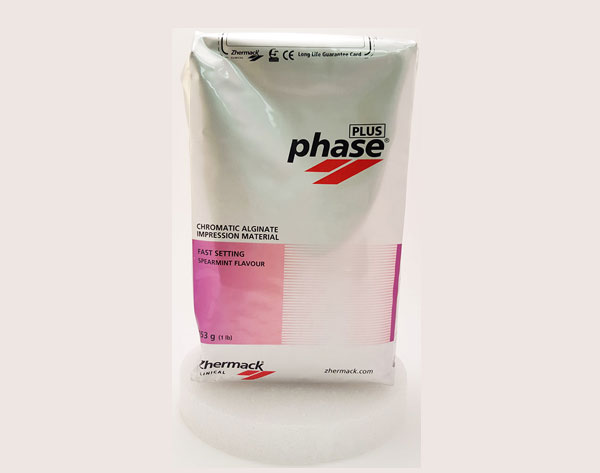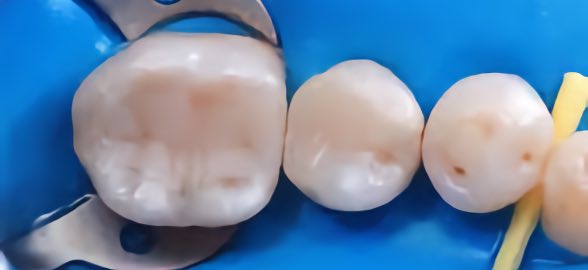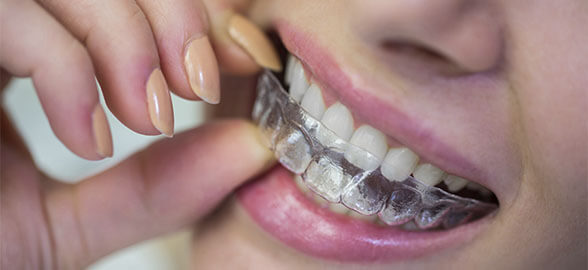Using alginates for taking impressions is one of the oldest and most effective methods still in use in the dental sector.
It's an essential material in any dental clinic, which is why we want to talk to you about them today so that you're completely clear when taking impressions with alginates. We're going to tell you about their specialised qualities and which is the most suitable one depending on the type of impression you need to take.
What are dental alginates?
Alginates are mixtures of chemical products, some of which come from seaweed, which give them the necessary qualities to take moulds and then reproduce them.
These alginates come in the form of powder and, when mixed with water, acquire the plastic and elastic consistency needed for moulding in just a few minutes.
These materials have evolved significantly to help the dentist make dental impressions. As such, different types of additives have been added that allow, for example, changes in colour to determine the setting time or when they can be removed from the mouth once set, as in the case of chromatic alginates. As well as other advances, such as the elimination of dust in suspension and the ease of application and mouldability.
For all these reasons, alginates, in the dentistry field, are particularly suitable for all types of dental impressions, whether full or partial, as well as soft tissue, and for the creation of temporary prosthetics.
We're now going to tell you about the steps to follow to make a dental impression with this material and we detail the types of dental alginates that are available on the market.
Steps to follow to make an impression system using dental alginates
At Dentaltix, we're aiming to lead the change in the Dental Sector and reduce the amount of plastic consumed in Dental Clinics across the globe - so it's no wonder this Fast-Set Chromatic Alginate created by our own Plastic Neutral Brand 'VIDU' is one of our favourites!
This alginate is designed to take highly accurate and elastic dental impressions. Furthermore, like all VIDU products, it is Plastic Neutral: the amount of plastic generated by the packaging is collected from the Mediterranean Sea, so the product generates a zero plastic footprint, being more sustainable than competitor's alginates.
- Fast setting: 30 seconds
- Contains a colour phase indicator, which facilitates the dentist's work.
- Dust free and easy to remove.
- Maintains high dimensional stability over time.
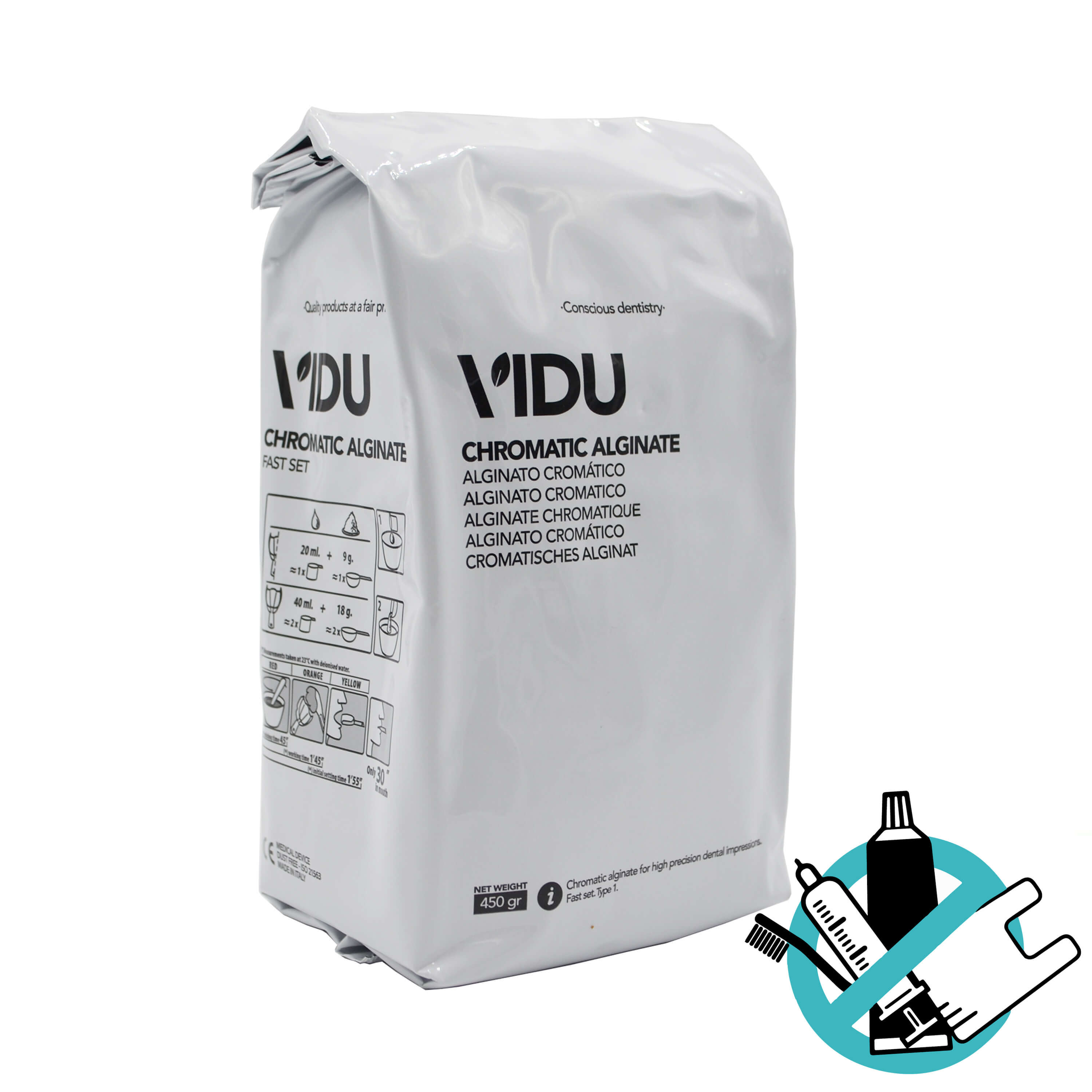
Here are the general steps you should follow when making a dental impression with alginate:
STEP 1: Choice and preparation of material for the impression
First of all, the impression tray must be prepared. The tray selected must be wide enough so that when it is trialled in the patient's mouth, there is 5 mm between the tray and the gums, so that there is enough space for a correct thickness of the alginate. In some cases, the patient's mouth does not allow a correct impression with a standard tray, so a unique tray will have to be created.
Of course, at Dentaltix you will find a wide variety of trays, so you can choose according to your needs... and from the best brands!
STEP 2: Mixing the alginate and loading the tray
Before using the alginate, the package must be shaken so that all the components of the powder are well mixed. In addition, make sure you closely follow the manufacturer's guide to the amounts of alginate and water that should be used in the mixing process.
The mixing process must be energetic so the mixture is fully incorporated, without lumps or dust - but this step must always be completed quickly to ensure it complies with the time-frame recommendations from the manufacturer.
Finally, to load the tray, take the alginate from the cup with the spatula (in one or two loads), place a sufficient, well-distributed quantity (without overloading) into the tray applying light pressure so that no air is trapped. This must be done quickly, so that the setting time is not wasted in loading the trays.
In this way, in order to achieve quality prints, it is very important to take into account certain factors that directly influence their production, such as the technique used, experience and the materials chosen for their creation.
STEP 3: Impression or impaction of the tray in the mouth
The upper impression should be made until the alginate overflows the cuvette limits, first in the anterior area and then in the posterior area. The tray should be kept in a fixed position during the setting phase, being supported by the index and middle fingers of the technician's right hand.
During the lower impression, the patient should be reminded, after inserting the tray, to lift the tongue towards the palate to obtain the impression of the surrounding areas.
Once the material has been set, the tray should be removed from the mouth, taking care not to deform it, with movements aimed at losing the "vacuum" that will have been created between the mucosa and the alginate.
STEP 4: Casting the mould
Finally, it is important not to forget the cleaning and disinfection procedures of the materials to prevent the risk of contagion.
First, the impression will be washed with water to remove saliva residues and then it will be cast in plaster, before finally obtaining the model of our patient's teeth.

➜Dentaltips:
We do not recommend wrapping the impression in dry or damp paper or cloth, as the uneven pressure causes it to warp and the dampness also causes distortion. In addition, it's also important that you always conform to the proportions of powder and liquid provided by the manufacturer, as well as the maximum time in which the print can be cast after taking it, which should be about 15 minutes, although it will always depend specifically on the manufacturer's recommendation.
So... what are the main types of dental alginates?
High Stability Alginates
The main characteristic of this type of alginate is that they have a high elasticity, also achieving a high resistance to breakage.
Among the alginates in this category, we can highlight Hydrogum 5 from the prestigious Zhermack brand, with homogeneous consistency and precise reproduction of details, as well as being fast setting; and Colorchange from Cavex, which is a chromatic alginate, in which the setting process can be observed thanks to its two colour changes, as well as having a dimensional stability of at least 9 days.
High Elasticity Alginates
This type of alginate is ideal for working around metal structures, as they stand out for their high elasticity and resistance to pressure.
Among them, you will find it interesting to know about Impressional, which is an elastic alginate from the Cavex brand that, due to its properties, does not slip to the bottom of the mouth, facilitating the patient's relaxation by not feeling uncomfortable and providing a very detailed reproduction. This product is available in two different ranges: Fast and Regular formats.
Alginate Neocolloid from Zhermack is remarkable for its ability to quickly absorb water and to make a simple and fast mixing without producing bubbles.
Alginates for Orthodontics
These alginates are for specific use in orthodontics, because they are mouldable even in the presence of dental brackets, as well as being quick setting and having a firm consistency.
At Dentaltix, for this type of orthodontic alginate, we stock Orthoprint from the Zhermarck brand, which is specific for orthodontic use, dust-free, very elastic and extra fast setting. Orthotrace alginate from Cavex is also ideal for orthodontic impressions, as it is highly tear-resistant and adapted to the needs of orthodontic practices and the orthodontic laboratory.
Universal Alginates
Unlike the specific alginates, this class of alginates are designed for daily practice in the clinic.
In this alginate category, CA37 from Cavex is cadmium- and lead-free, dust-free and has a rapid water absorption capacity, as well as Phase Plus by Zhermack, which is fast setting and produces a homogeneous mixture with smooth, compact surfaces, offering long lasting preservation of impressions.
So, we advise that you choose the alginate and accompanying materials needed to take impressions according to your needs and the procedure you are planning to carry out, always taking into account the characteristics of each of them. For this reason, here is the wide range of Dentaltix printing products available, so that you can choose whatever you may need.
View Dental Impression products!
That's it for our article today! We hope it has been helpful and that you have learned about Dental Alginates. And if you liked this article, don't hesitate to share it and follow us on social networks to keep up to date with all the latest news in the dental sector and our special offers. See you soon!

